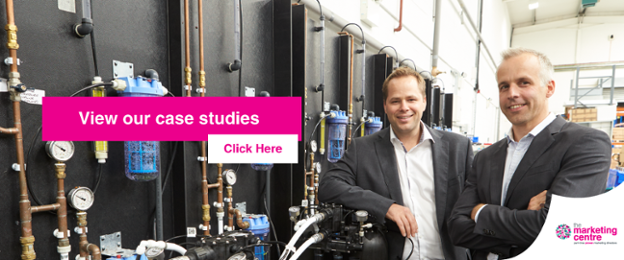There is no such thing as a rational purchase decision.
Sure, there are practical necessities like cost, quality and effectiveness, but our initial purchase desire comes from a feeling, usually of frustration. We then go and research a load of information, find out which is the best solution, and then, generally, make our final decision based on emotion, too.
You can find a house that ticks every box, but if it doesn’t ‘feel’ right, you won’t buy.
For businesses, this is an opportunity. If you can understand human nature, you can predict, measure and influence non-conscious, emotional reactions.
While any business can use these techniques, the retail industry are past masters, using language, imagery, cognitive nudges and more to massively impact a consumer’s choices.
Let’s have a look at how they do it.
Language
Adjectives
Adjectives are the words that describe or modify a person or thing within a sentence. The wrong use can clutter a sentence, the right use can exponentially increase engagement. Adjectives can be topical – think about ‘happy’, ‘jolly’, ‘joyful’, ‘merry’ or ‘generous’ Christmases, for instance. But how about trying something a little more unusual, like efficacious, ethereal, exultant, heady, incandescent, placid or vivacious to stand out?
Dazzling descriptors: The right choice of adjective can make a huge difference
The key is quality over quantity. Don’t willingly obfuscate to the point of unintelligibility. Be precise, be picky, choose wisely.
Takeaway: Copy needs care. And you’re probably not as good a writer as you think you are. Get a professional to look at copywriting, advertising and blogging.
Align Emotion
Aligning emotion means using language that understands and empathises with your target market. Take the following example of a razor company selling blades to men. The research team found that although their customers didn’t know how much eight Mach 3 razors cost, they thought they were expensive, and they didn’t particularly like purchasing them. The original campaign message was: “£9.45 for 8 Mach 3 Blades. Fast and Free delivery”. Direct, but not attacking the pain point of the target audience.
By aligning the message with the emotive response, however, the ad was updated to “REFUSE to pay £15 for 8 Mach 3 blades. £9.45 for 8 blades”. It’s a subtle change, but an important one. The word ‘REFUSE’ mirrored the emotion of the target market and it anchored the cost of the product differently (we’ll get onto the principle of anchoring below). By using a combination of these techniques, conversions doubled.
Takeaway: Think about what underlying emotion drives your target market and tailor your language accordingly.
Word Juxtaposition
By using combinations of words that do not normally go together you create an element of surprise that stays with the reader, e.g. beautifully ugly, or idiotically genius. They don’t have to be paradoxically opposed, though. For example, describing a chair as ‘delicious’ makes no sense, but conveys a powerful image for the reader.
Takeaway: Writing should not be an afterthought. The right copy can define your offering and win business. Get a professional copywriter with a firm grasp of the right language for your business.
Imagery
While there isn’t one absolute set of principles of imagery that can be applied to all industries, there are a couple of areas you can think about to drive a big jump in engagement as a starting point. For instance:
Colour – The general rule is, more richness of colour is better and produces a greater emotional response. Draining colour reduces response and distances the items.
Proximity – The closer we are, the more we experience the image. If you can show detailed close up shots, these will create a more tactile interaction with your product or brand.
Angle – Rather than show a product head on and flat, change the angle. Shown in 3D, the product will feel more tangible. In retail, businesses sometimes go one step further and use full 360 degree imagery which helps consumers imagine using or wearing the item.
Takeaway: Imagery is about bringing your brand to life. Boldness trumps nuance and mystery every time.
Cognitive Nudges
Scarcity and loss aversion
We value items and opportunities more as they become less available. Harness this principle by using one off, one time and limited value offers. A good example of this is booking flights. British Airways and other airlines show the number of tickets left, creating scarcity to drive action.
We also feel loss more than we feel gain (by roughly twice the amount), so framing a potential offer with what the customer could be losing rather than what they could be gaining can have a powerful effect.
In studies asking people if they wanted to insulate their home, half were told after insulation they would save a certain amount of money each day and the other half were told if they didn’t insulate they would lose a certain amount each day. A significantly larger proportion in the loss aversion group insulated their homes.
Takeaway: This can be overused and feel trite, depending on your industry (‘We only have three IT consultants in your area, snap them up today’). But tapping into the fear factor is a powerful tool.
Anchoring
This is where we anchor ourselves to the first piece of information we hear, and then find it hard to adjust when others are presented. For example, picture yourself shopping. If you walk into a clothing store and the first item you see is a £2,500 suit, then the £100 jumper you come across next seems like good value. However, if the first item you see is a £9.99 t-shirt, the £100 jumper seems extortionate.
Anchoring also relates to emotion as we anchor feelings to particular people, places, sights and smells. This is why someone that comes away from a brand interaction with a positive emotional response starts to anchor that to the brand, resulting in higher memorability and engagement.
Takeaway: Think carefully about how to frame your offering price, delight your customers at every interaction.
Extra Over Discount
Extra is typically valued more highly than discount. Which do you think is better value –
33% discount or 50% extra free?
Most people would say option two. They are, of course, the same thing. However, the extra amount for free tends to be the one we perceive as greater value.
Takeaway: Don’t be tempted to offer a discounted rate, far better to frame it as a value add.
The bottom line
Neuromarketing techniques are powerful tools which tap into our deeper psychological understanding of the world. While nothing new – these techniques are almost as old as advertising themselves – they are often forgotten as businesses race to get ‘good enough’. Websites are designed without a thought for copy; stock photos adorn and devalue sales materials; sales messages are blunt and uninspired.
We’re not saying business leaders need a psychology degree before they start marketing, but awareness of the power of the mind, and its malleability, can be the difference between good and incredible marketing.

Image credit: Image via adobestock/fabioberti.it




